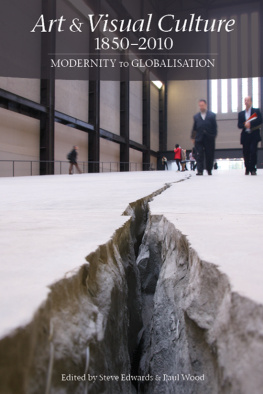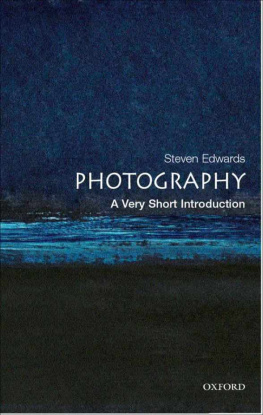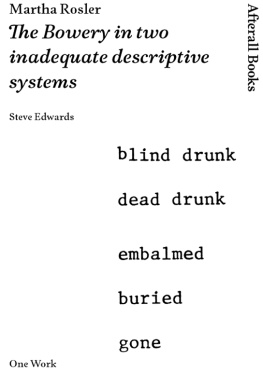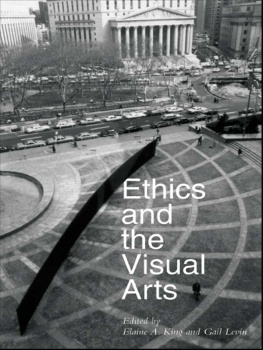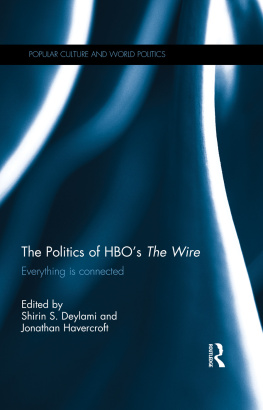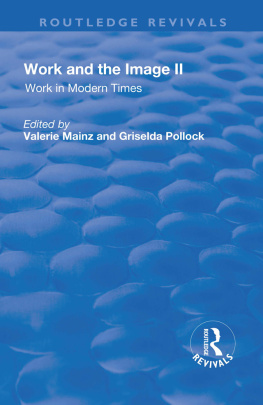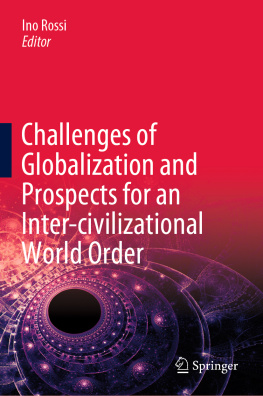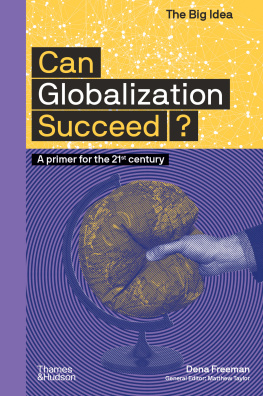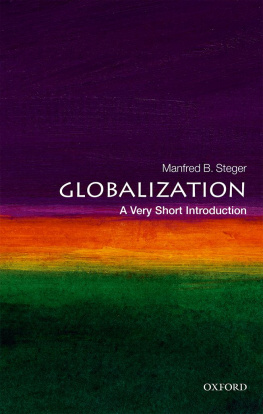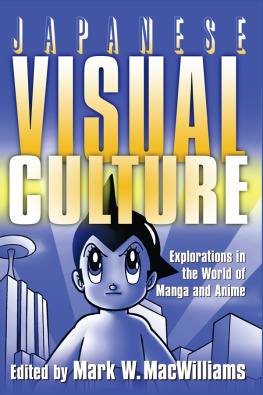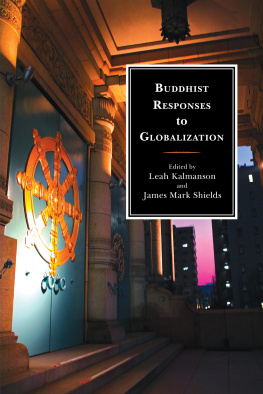Steve Edwards - Art & Visual Culture 1850-2010 Modernity to Globalization
Here you can read online Steve Edwards - Art & Visual Culture 1850-2010 Modernity to Globalization full text of the book (entire story) in english for free. Download pdf and epub, get meaning, cover and reviews about this ebook. year: 2013, publisher: Tate, genre: Art. Description of the work, (preface) as well as reviews are available. Best literature library LitArk.com created for fans of good reading and offers a wide selection of genres:
Romance novel
Science fiction
Adventure
Detective
Science
History
Home and family
Prose
Art
Politics
Computer
Non-fiction
Religion
Business
Children
Humor
Choose a favorite category and find really read worthwhile books. Enjoy immersion in the world of imagination, feel the emotions of the characters or learn something new for yourself, make an fascinating discovery.
- Book:Art & Visual Culture 1850-2010 Modernity to Globalization
- Author:
- Publisher:Tate
- Genre:
- Year:2013
- Rating:3 / 5
- Favourites:Add to favourites
- Your mark:
- 60
- 1
- 2
- 3
- 4
- 5
Art & Visual Culture 1850-2010 Modernity to Globalization: summary, description and annotation
We offer to read an annotation, description, summary or preface (depends on what the author of the book "Art & Visual Culture 1850-2010 Modernity to Globalization" wrote himself). If you haven't found the necessary information about the book — write in the comments, we will try to find it.
Art & Visual Culture 1850-2010 Modernity to Globalization — read online for free the complete book (whole text) full work
Below is the text of the book, divided by pages. System saving the place of the last page read, allows you to conveniently read the book "Art & Visual Culture 1850-2010 Modernity to Globalization" online for free, without having to search again every time where you left off. Put a bookmark, and you can go to the page where you finished reading at any time.
Font size:
Interval:
Bookmark:
This is the third of three books in the series Art & Visual Culture, which together form the main texts of an Open University Level 2 module, Exploring art and visual culture. Each book is also designed to be read independently by the general reader, to whom they offer an accessible introduction to some of the key issues raised by the study of art and visual culture across a broad historical period.
Central to each book is a concern with the ways in which the concept of art has developed over the course of time and how visual practices have both responded to and been shaped by these changing ideas. This final book in the series explores a period in which modern art diversified into a wide range of forms and media and spread from a few western centres to become a world-wide practice.
All of the books in the series include teaching elements. To encourage the reader to reflect on the material presented, each chapter contains short exercises in the form of questions printed in bold type. These are followed by discursive sections.
The three books in the series are:
Art & Visual Culture 11001600: Medieval to Renaissance, edited by Kim W. Woods
Art & Visual Culture 16001850: Academy to Avant-Garde, edited by Emma Barker
Art & Visual Culture 18502010: Modernity to Globalisation, edited by Steve Edwards and Paul Wood.
There is also a companion reader:
Art & Visual Culture: A Reader, edited by Angeliki Lymberopoulou, Pamela Bracewell-Homer and Joel Robinson.
Steve Edwards
This book addresses art and architecture across a broad period of two centuries, but it would be impossible to tackle the convoluted history of modern art in a volume of this size.1 Instead, we have opted to present some snapshots of art made during this period. The eight topics discussed have been selected to highlight both what happened in art history and visual culture and to draw attention to some influential ways of thinking about modern art. The book is organised in two parts. Part 1 examines the period from the middle of the nineteenth century until the end of the 1930s. It considers French and English art of the nineteenth century, the rise of Cubism and abstract art and the modern movement in architecture and design. Part 2 looks at developments from the middle of the twentieth century up to the present day. It opens with a study of figurative painting and sculpture; then, focusing on two exhibitions, it considers influential trends associated with New York in the period after the Second World War; and the final two chapters cast a spotlight on globalisation and recent developments in art.
During the period covered by this book, art changed out of all recognition. At the beginning of our period, the various academies still held sway in Europe. Artists continued to learn their craft by drawing from plaster casts before progressing to the figure, and the trip to Rome remained a cultural rite of passage. It is true that the hierarchy of the genres was breaking down and the classical ideal was becoming less convincing. In 1859, the French poet Charles Baudelaire (182167) poured scorn on the new medium of photography. According to him, photographs that imitated paintings of ancient history were ludicrous:
By bringing together a group of male and female clowns, got up like butchers and laundry-maids in a carnival, and by begging these heroes to be so kind as to hold their chance grimaces for the time necessary for the performance, the operator flattered himself that he was reproducing tragic or elegant scenes from ancient history.2
Baudelaire was suggesting that photographs that mirrored history painting male and female clowns, got up like butchers and laundry-maids in a carnival were utterly unpersuasive, because tawdry details from everyday life undermined references to ancient history. Many of his contemporaries went a step further, believing that paintings and sculptures of contemporary women posed as classical nymphs were equally preposterous. Increasingly, academic art failed to generate conviction, and ordinary landscapes and scenes from everyday life began to replace resurrected Romans. Nevertheless, what counted as art in much of the nineteenth century remained pretty stable. Whether in sculpture, painting, drawing or printmaking, artworks represented recognisable subjects in a credible human-centred space. To be sure, subjects became less high-flown, compositional effects often deliberately jarring and surface handling more explicit. There were plenty of academicians and commentators who believed these changes amounted to the end of civilisation, but from todays perspective they seem like small shifts of emphasis.
In contrast, art in the first part of the twentieth century underwent a rapid gear change. Art historians agree that during this time artists began to radically revise picture making and sculpture. As you will see in chapters 1 and 3, painters flattened out pictorial space, broke with conventional viewpoints and discarded local colour.3 Sculptors began to leave the surface of their works in a rough, seemingly unfinished state; they increasingly created partial figures and abandoned plinths or, alternatively, inflated the scale of their bases. Architects abandoned revivalist styles and rich ornamentation. To take one often cited example from painting, while the art of Paul Czanne (18391906) is based on a recognisable motif, say a landscape, when looking at these paintings we get the distinct impression that the overall organisation of the colours and structural elements matters as much or more than the scene depicted. To retain fidelity to his sense impressions, Czanne is compelled to find a new order and coherence internal to the canvas. Frequently this turns into incoherence as he tries to manage the tension between putting marks on a flat surface and his external observation of space.
As Paul Wood shows in chapter 3, in fifteen years some artists would take this problem the recognition that making art involved attention to its own formal conditions that are not reducible to representing external things through Cubism to a fully abstract art. Conventionally, this story is told as a heroic progression of movements and styles, each giving way to the next in the sequence: Post-Impressionism, Fauvism, Cubism, Futurism, Dada, Constructivism, Surrealism . Each changing of the guard is perceived as an advance and almost a necessary next step on the road to some preset goal. This rapid turnover of small groups and personal idioms can seem bewildering and, in fact, this is a minimal version of this story. Whether they sought new expressive resources, novel ways of conveying experience or innovative techniques for representing the modern world, modern artists turned their backs on the tried and tested forms of mimetic resemblance. But what counted as art changed too. Bits of the everyday world began to be incorporated into artworks as collage or montage in two-dimensional art forms; in construction and assemblage in three-dimensional ones. The inclusion of found materials played a fundamental role in modern art. The use of modern materials and technologies steel, concrete, photography did something similar. Some artists abandoned easel painting or sculpture to make direct interventions in the world through the production of usable things, whether chairs or illustrated news magazines. Not all artists elected to work with these new techniques and materials, and many carried on in the traditional ways or attempted to adapt them to new circumstances.
Broadly speaking, there are two different ways of thinking about modern art, or two different versions of the story. One way is to view art as something that can be practised (and thought of) as an activity radically separate from everyday life or worldly concerns. From this point of view, art is said to be autonomous from society that is, it is believed to be self-sustaining and self-referring. One particularly influential version of this story suggests that modern art should be viewed as a process by which features extraneous to a particular branch of art would be progressively eliminated, and painters or sculptors would come to concentrate on problems specific to their domain. This version of modern art and the theories associated with it will be examined in more detail in Part 1 of this book. Another way of thinking about modern art is to view it as responding to the modern world, and to see modern artists immersing themselves in the conflicts and challenges of society. That is to say, some modern artists sought ways of conveying the changing experiences generated in Europe by the twin processes of commercialisation (the commodification of everyday life) and urbanisation. From this point of view, modern art is a way of reflecting on the transformations that created what we call, in a sort of shorthand, modernity.
Font size:
Interval:
Bookmark:
Similar books «Art & Visual Culture 1850-2010 Modernity to Globalization»
Look at similar books to Art & Visual Culture 1850-2010 Modernity to Globalization. We have selected literature similar in name and meaning in the hope of providing readers with more options to find new, interesting, not yet read works.
Discussion, reviews of the book Art & Visual Culture 1850-2010 Modernity to Globalization and just readers' own opinions. Leave your comments, write what you think about the work, its meaning or the main characters. Specify what exactly you liked and what you didn't like, and why you think so.

